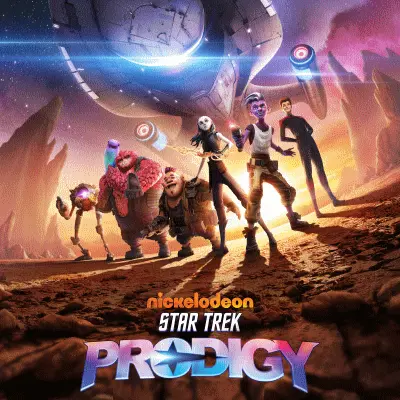Star Trek: Prodigy works as a kid-friendly Trek series, capturing what's made the franchise endure for generations
-

"It’s a simple, fascinating idea that sets the tone for the first few episodes of the show provided for review: a Star Trek as hell thought experiment that’s provoking enough for fans to latch on to, but simply executed and communicated so that a young audience can understand," says James Whitbrook of the Paramount+/Nickelodeon animated series. "They’ll likely understand too that Prodigy is an action-adventure series at heart. The initial conflict is solved quickly enough when Dal and Zero, dragging their two new friends along in the process—as well as the Diviner’s daughter Gwyn (Ella Purnell), cast here as more of an unwilling hostage than a protagonist—discover mid-escape that Tars Lamora is the resting place of a secret, experimental Starfleet ship, the U.S.S. Protostar. The ship, housing another important Star Trek connection beyond its status as a Starfleet vessel (more on that later) not only translates our heroes’ thoughts so they can actually start working together, but gives them the chance to escape and dream of the stars beyond their current home. Their adventures are punctuated by high-speed escape chases and lots of pew-pew phaser firing as the kids try to get used to the exploration/military starship they suddenly find themselves at the helm of. But dreaming of more is an ideal that has fuelled generations of Star Trek, just examined from a slightly different lens here. What kind of young kid hasn’t longed for something more, had the wanderlust to see the world beyond their normal life? What is Star Trek about, if not that mission first invoked by Captain Kirk, and countless others over 55 years after: to boldly go?"
ALSO:
- Star Trek: Prodigy works as intended as a show for younger viewers: "Star Trek: Prodigy, the newest series in the long-running science fiction franchise, is a rare rhetorical bird for the Trek world," says Jeff Ewing. "It isn't the first animated franchise entry (that honor belongs to Star Trek: The Animated Series, to be followed by the decidedly more humorous Star Trek: The Lower Decks), but it's the first franchise animated series aimed specifically for a younger audience. As the Trek introduction to younger audiences that it's intended to be, the series (or at least the episodes provided for advance review) is successful, finding an enjoyable baseline to introduce young protagonists to the world and values of the Federation through the eyes of a band of outsiders."
- The lack of immediate signifiers may be an intentional attempt to subvert expectations: "Where Star Trek: Discovery leaned into Abrams’ high stakes/high emotions big swings, and The Lower Decks offered affectionate parody of familiar Trek tropes before learning to use those tropes to its own advantage, Prodigy seems genuinely interested in bringing a new kind of story to the Trek-verse," says Zack Handlen. "While the 'new' is largely contextual—the rhythms here should be familiar to anyone who’s watched similar stuff in the past—there’s an interesting tension that arises when the show does finally deign fit to start delivering on the first part of its namesake. There have been Trek shows about new crews, about new worlds, about new civilizations, but there’s never been one from the outside looking in. What does Starfleet and the Federation mean to a bunch of orphans looking for a home?"
- A Star Trek: Prodigy feature film is already in the works
- How Star Trek: Prodigy bosses tackled translating Star Trek for kids: “It was just about the perspective (of the characters), which kind of stems from our own fears about doing a Star Trek show,” says Dan Hageman who is overseeing the show with his brother
. “I would think, ‘I could never write what they say on the bridge, these characters have all been through Starfleet, they’re the best of the best.’ So the very first thing was, what if we just take kids who don’t know any of this? You give them a ship, and they learn about the ship, they learn about the procedures. It felt like a totally new way into Star Trek that would be relatable.”
TOPICS: Star Trek: Prodigy, Nickelodeon, Paramount+, Dan Hageman, Kevin Hageman, Kids TV
More Star Trek: Prodigy on Primetimer:
